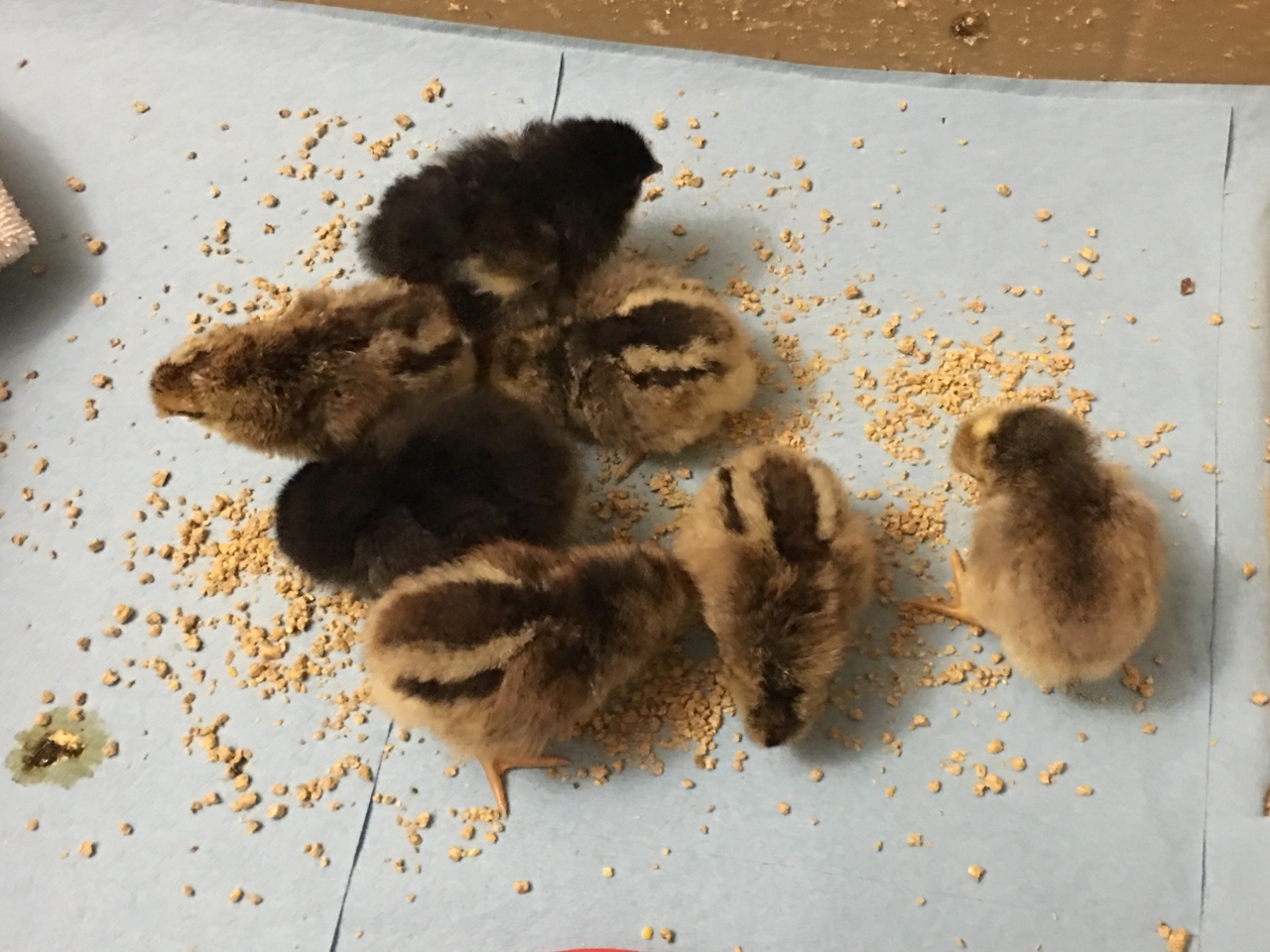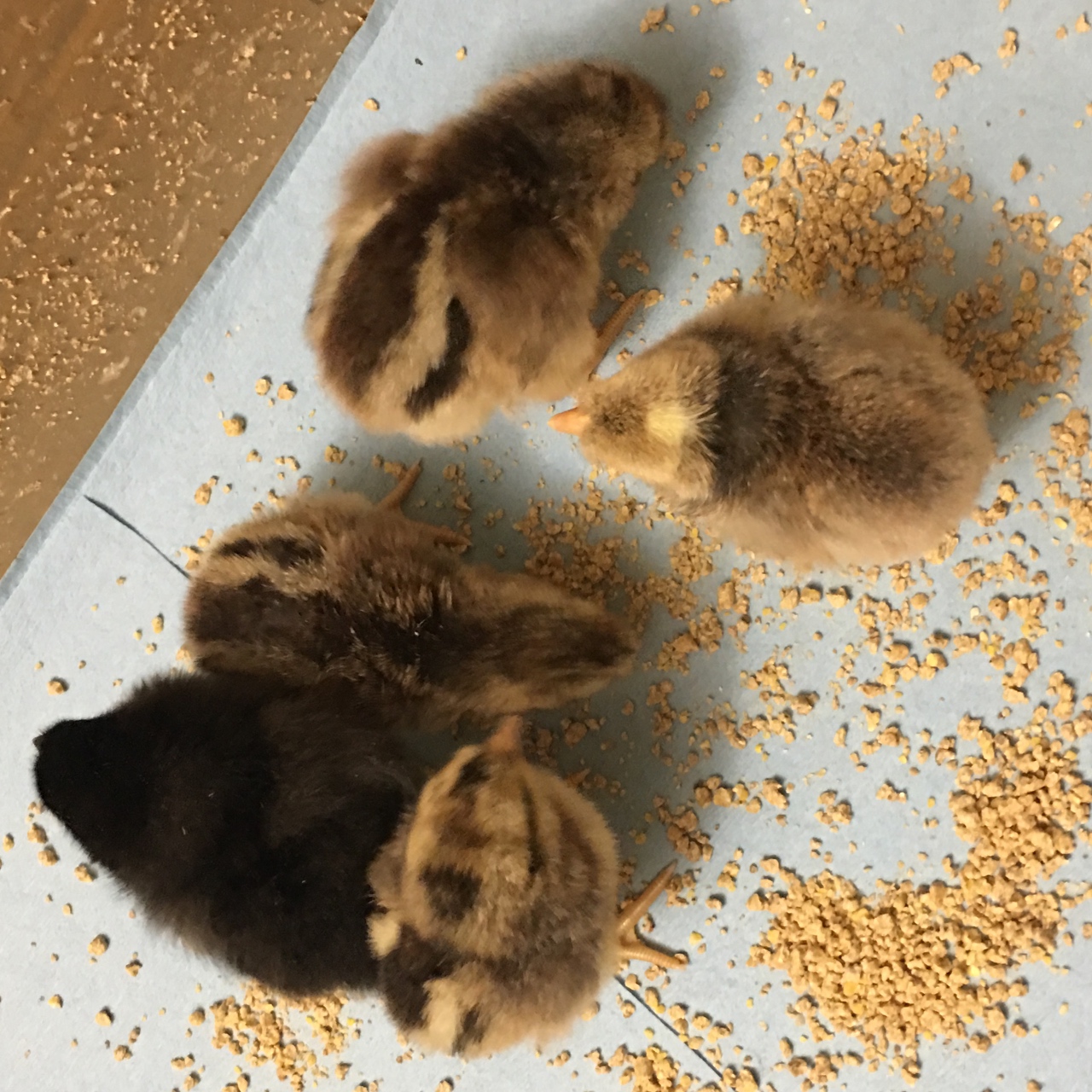
The first hatch of the year was an unusual one: the bulk of the batch was shipped Cream Legbar eggs – and shipped hatching eggs typically have a low hatch rate (for a number of reasons). We also put in a couple of our own Black Copper Marans eggs – early in the season, for them – and hoped for the best.
Historically, our BCM eggs tend to hatch around days 22-23…so we were surprised when the first hatchling out was a BCM chick, on day 21! Off to a good start. The hatching activity for the CL eggs really picked up on day 22, when most of them hatched. To our delight, the other BCM chick, which had externally pipped a tiny hole and then didn’t seem to do much afterward for a long time, also hatched. There were a few CL eggs that showed no external pips, so we were a little worried; some chicks, however, just take a little longer to emerge, so we resolved to be patient.
As of this morning, day 23, another CL chick had hatched in the wee hours and the remaining three eggs had good external pips. By 11 a.m., all of the remaining eggs had hatched. The early-hatching BCM and the older CL chicks were getting antsy, so we moved the fluffy chicks into their brooder, where their water, food, and heat source were awaiting them. The last few chicks to hatch weren’t quite ready for the brooder, so they’ll stay in the incubator until they’re dry and stronger.
We’re very pleased with the 100% hatch rate for the eggs that made it to lockdown, especially since this hatch included the shipped eggs. Sadly, we did have one loss: a hatchling that emerged before she had completely absorbed her yolk. After noticing that she was dragging some goopy stuff around, we put her in a “cup” (a short plastic plant pot lined with a stretchy nylon sock that’s slightly suspended above the bottom of the pot) so that she wouldn’t be pecked or trampled by the others; we found her expired in her cup later in the day, likely from blood loss. We use these cups to hold weaker hatchlings while their legs strengthen, as well as a means to keep chicks with closing navels or still-absorbing yolks isolated in the incubator, and they’ve proven very helpful. If you hatch your own birds, keep some on hand; hopefully, you won’t need them, but they’re invaluable if you do – just make sure they’re short enough that your incubator will close fully when you place the cup inside.

One of the really nice attributes of Cream Legbars is that they’re auto-sexing, so we know how many are male and how many are female at hatch. It looks like there are just 2 cockerels in the group, which is ideal…and that means there are 8 pullets! Black Copper Marans aren’t auto-sexing, so it’ll be a surprise until they’re at least a couple of months old (but we’re hoping our luck is better with this hatch – last time, the 3 eggs that hatched were all cockerels).
Stay tuned for updates on the chicks (and cute chick pics, of course)!
